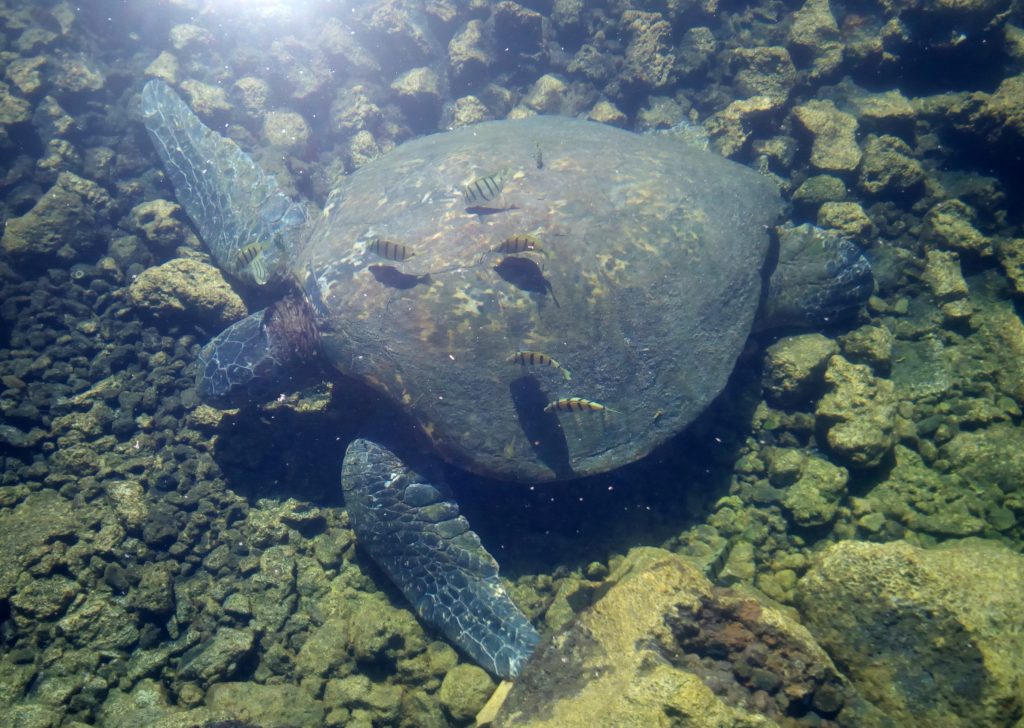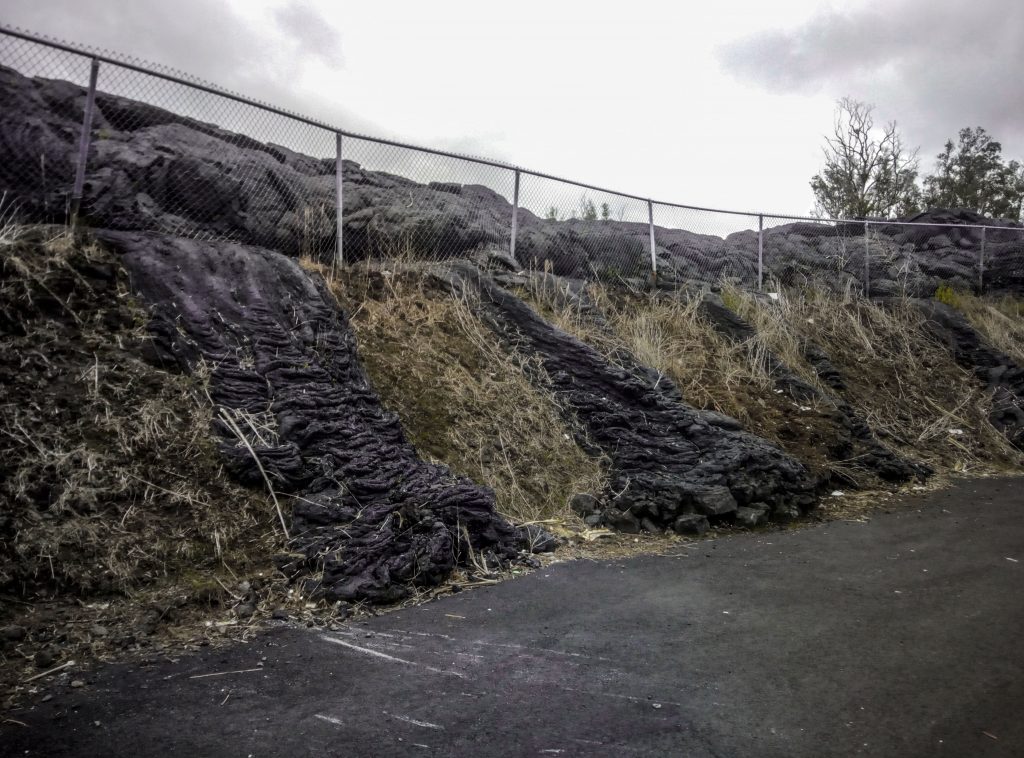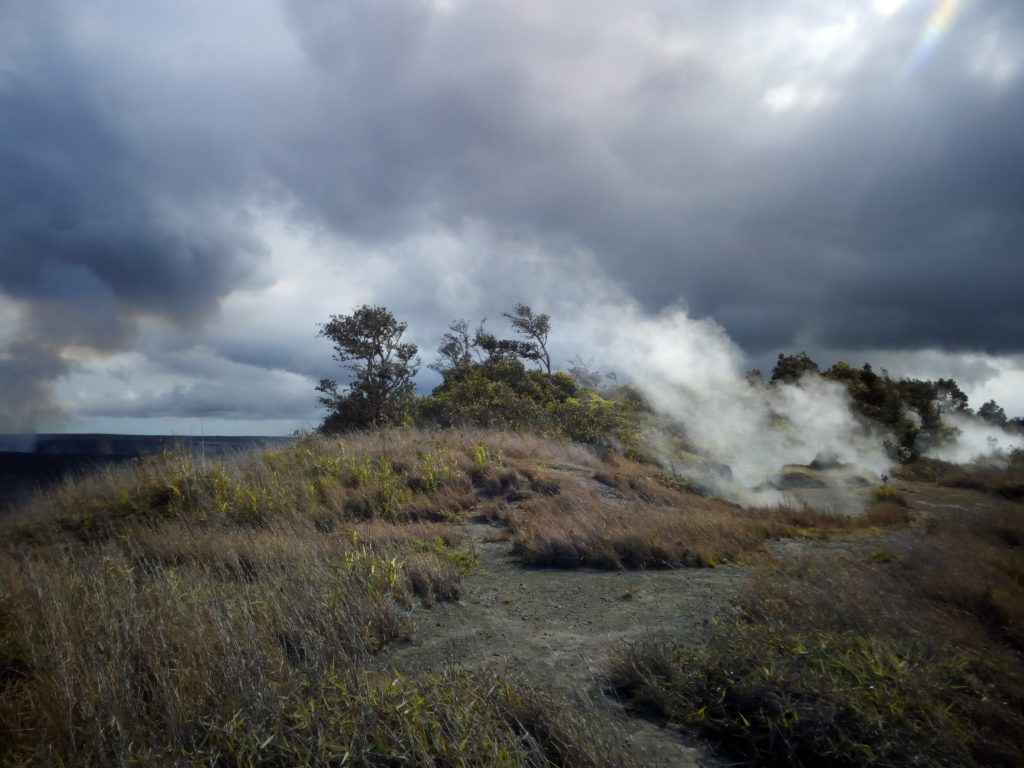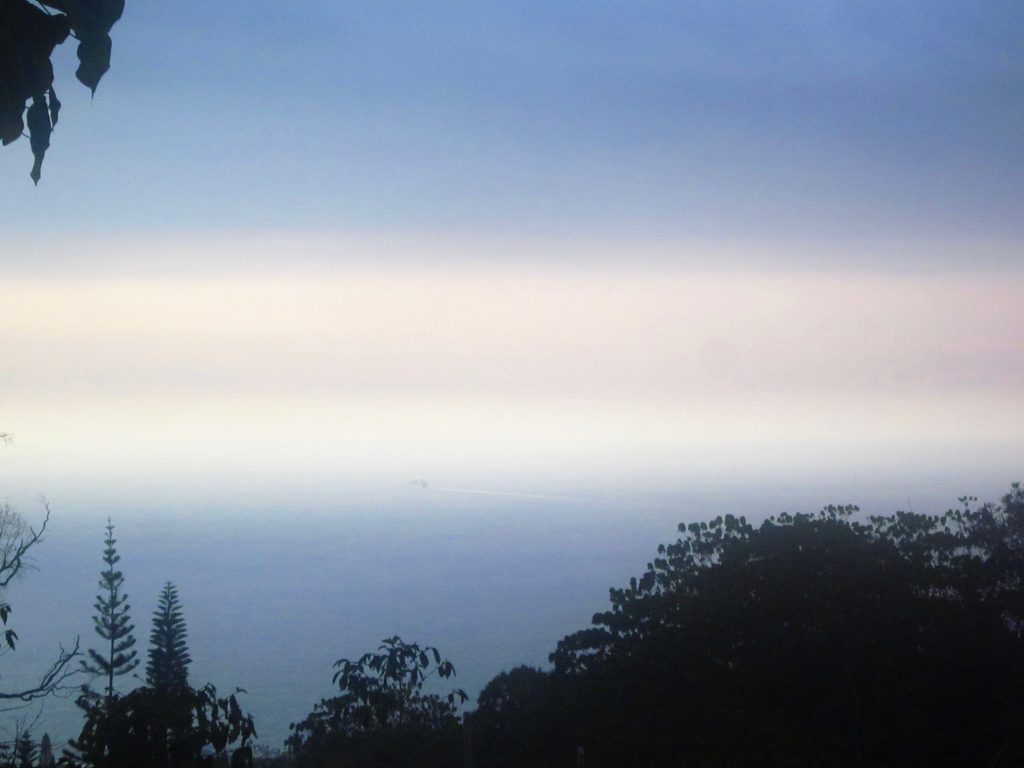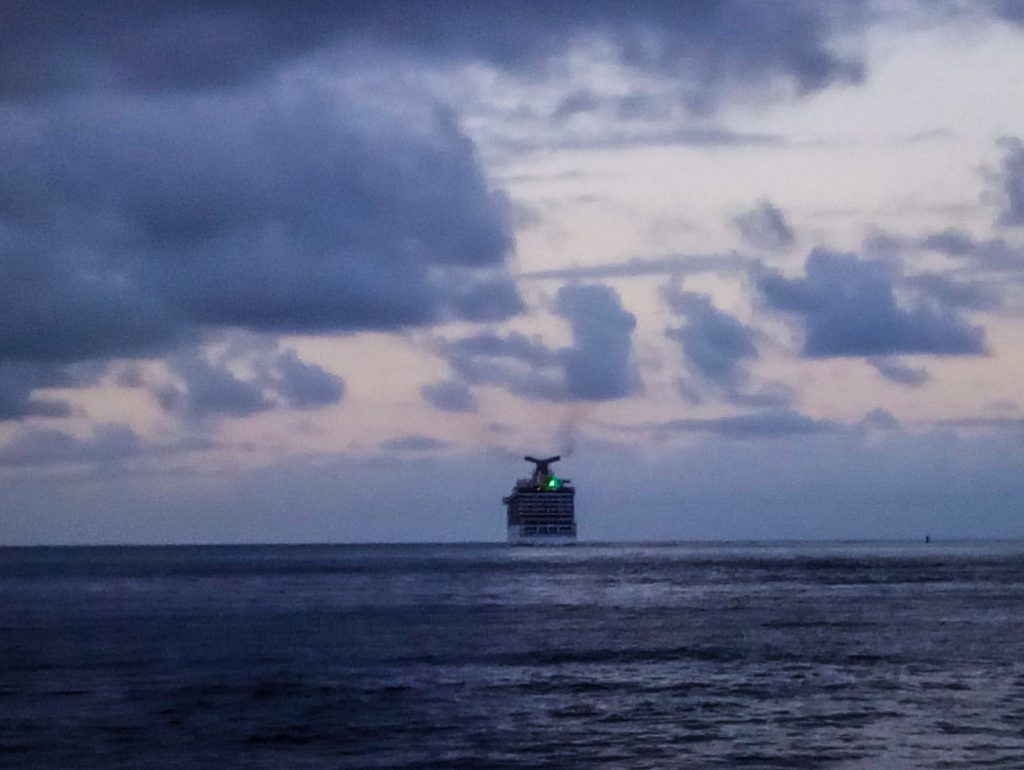
The Pride of America is a cruise ship that travels the Hawaiian Islands only, as opposed to the other cruise ships visiting Hilo that travel the world. She, comes in once a week every Tuesday making it the cruise ship most likely to be encountered in Hilo harbor.
THE KILAUEA ERUPTION
In early May 2018, when the volcanic eruption geared up, the Pride of America, like other cruise ships, suspended her stops on the Big Island for security reasons. No cruise ship was to be seen in Hilo harbor for well over a month.
Mid June she was back, much to the relief of the people in Hilo, many of whose livelihood depended on a steady stream of tourists. It was generally taken as a sign that the worst was over now and things were getting back to normal.
AMERICA THEMED
The interior of the Pride of America is impressive and, of course, American themed. There are 15 bars and restaurants, shops, a library, three swimming pools, a theatre, a wedding chapel. You can watch movies, listen to lectures or take part in dance classes, amongst others. If you’d like to see for yourself, there are video clips by former passengers that filmed a tour of the ship and posted it online.
REGISTERED IN THE USA
The Pride of America is the only major cruise ship that is registered in the United States. The vast majority of other commercial ships calling American ports fly so-called convenience flags, such as the Bahamas, Panama or Malta. That means American law does not apply to these ships. The nations whose open registries are the most popular also tend to be those who possess the most lax labor, safety and environmental codes. In short, it allows them to cut their costs.
ALL AMERICAN CREW
There are 900 crew on board of the Pride of America. That’s one crew for every two or three passengers. All crew members are American citizens or legal residents. Again this is very unusual. Normally crews are multinational and cruise ships pay wages according the country the crew is from. So, an American crew would be paid more than, say, a Malaysian.
NO DUTY FREE AND NO CASINO
Sailing the Hawaiian islands means you’re never out in international waters, hence there is no duty free and no casino on board. Which is unusual as these are standard features on the vast majority of other cruise ships as it’s a good opportunity to generate income.
FIRST AMERICAN CRUISE SHIP IN NEARLY 50 YEARS
The Pride of America was the first American cruise ship to be launched in nearly 50 years. She was built with heavy federal subsidies in an attempt to improve the competitiveness of American shipyards by building commercial, non-military vessels.
ROCKY START
The ship had a rocky start. Work started in 2000, but the company that were to operate these ships, filed for bankruptcy in 2001, citing a low demand after the 9/11 terror attacks, among other reasons. The current operator, Norwegian Cruise Lines acquired the unfinished ship and had it towed to Germany. In 2004, just before completion, a major storm hit the shipyard and caused considerable damage to the ship which sank at the berth. This caused the shipyard, Lloyd Werft, to file for bankruptcy as well. After much negotiation she was eventually completed by Lloyd in 2005 and cruises the Hawaiian islands since.
She can easily be recognized by the stars and stripes artwork on her hull.
